
views
Rug pad
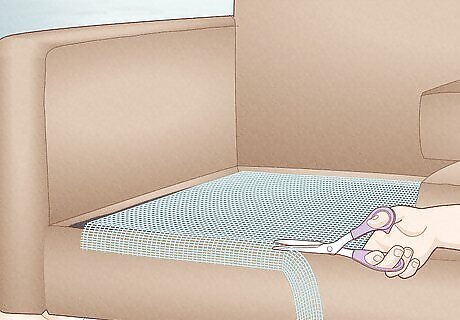
Rubber pads that go underneath rugs will keep your couch cushions in place. Rug pads, also known as underlay pads or rug grippers, are the sticky rubber sheets that go under rugs to keep them from shifting around. Purchase a rug pad and cut it into square-shaped sheets using scissors (if necessary). Slide the pads in between the couch cushions and your couch’s frame. This will keep your cushions in place. The felt pads are less likely to work than the rubber pads. You can also buy a rug pad for a runner if you’d like. That way, you can lay it in between multiple cushions in a single piece to keep it simple.
Non-slip mattress pad

The pads that keep mattresses in place will keep your cushions still. If you’re a restless sleeper, you might be familiar with non-slip mattress pads. These sticky sheets go in between a mattress and box spring to keep the mattress from moving around. Purchase a mattress pad, cut it to match the dimensions of your cushions with scissors, and slide the pieces between the cushions and the frame of your couch. If you already have a non-slip mattress pad, you can cut a chunk off and use that instead of buying a brand-new non-slip pad. Your mattress won’t wiggle too much just because you take a portion of the pad off.
Shelf liner
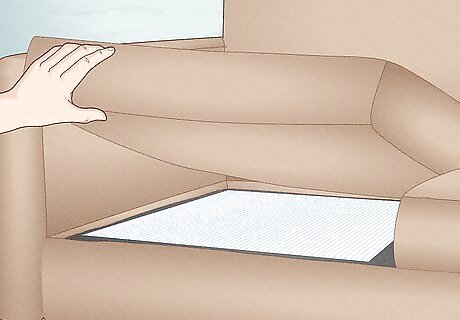
Sticky shelf protectors for your kitchen will hold cushions in place. Any shelf liner that has some tack to it will work. Cut the sheets into cushion-shaped squares with some scissors and slide the shelf liners in between the cushions and the sofa frame. Your cushions will stop sliding around whenever you sit and stand up. Shelf liners are also known as drawer liners. These are the same thing. You need the sticky kind of shelf liner for this to work. The smooth stuff just won’t keep the cushions in place.
Rubber pads
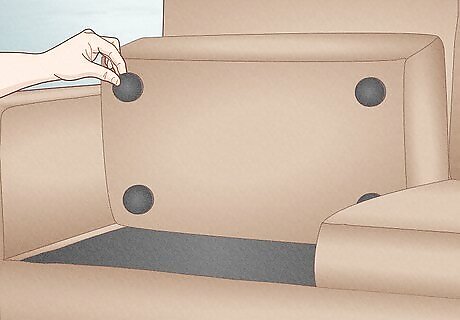
Rubber provides enough friction for the cushions to stay still. Any kind of rubber padding will provide some support for your cushion, but the anti-slip rubber furniture pads are likely going to provide the most tack. Throw a few rubber pads in between the cushions and the frame of your couch to keep everything where it belongs. You can also buy cuttable rubber sheets designed for DIY gaskets or flooring. If your couch feels a little saggy, you can fix it with stiff rubber mats designed for kitchens.
Velcro
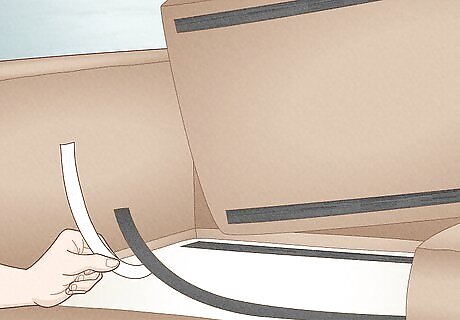
Velcro tape is a quick and easy permanent solution to your problem. Purchase a roll of Velcro tape. For each cushion you want to hold in place, cut two long strips of the tape. Place one length along the back of the cushion, and adhere the other strip along a solid portion of the frame to match the cushion. You can measure in from the front edge of your couch if you want to be scientific, but it’s totally fine to just do this by eye. If your cushions are made of fabric, you’ll need to sew the tape into the cushion since the sticky tape stuff won’t stay in place. Velcro tape is also known as hook-and-loop tape.
Rug tape
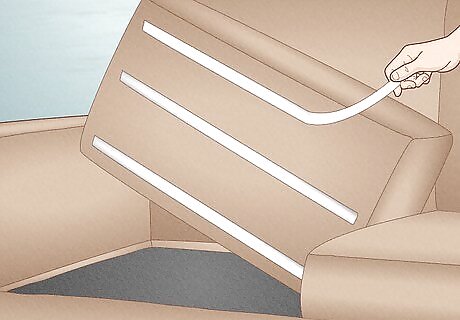
Rug tape provides enough tack to hold your cushions in place. Rug tape is basically an adhesive version of a rug pad. Flip each cushion over and peel off a section of rug tape on the underside of your cushion. Remove any adhesive backing and flip your cushion back over. The tape will provide enough friction for the cushions to sit in place. This is a good solution if you want a solution like Velcro, but your couch’s material won’t let the adhesive on the Velcro tape stick. Rug tape will typically stick to any surface. Rug tape is typically non-adhesive. The “adhesive” part is just the natural texture of the tape.
Non-slip cushion cover
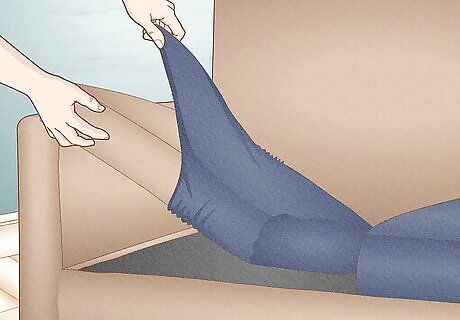
Covers will keep your cushions in place while protecting them. Purchase non-slip cushion covers in a style you like. Throw them on your cushions and set them back where they belong on your couch. So long as your covers are non-slip, the cushions won’t shift around too much. This is an awesome solution if your cushions are looking a little rough and you’ve been thinking about replacing or fixing them. If you don’t want to change the way your cushions look, sew two pieces of non-slip fabric on the underside of each cushion. Felt and cotton will stick together, for example.
Ring and hook

Create a hook system for each cushion to keep them from sliding off. This is a bit cleaner than other solutions, but it does require a little more work. Sew a fabric loop on to the frame of your couch where it meets the center of your cushion. Sew another loop onto your cushion. Then, slide a keyring through one loop, and an S-hook through the other. Use the S-hook to connect the cushion to the frame. You can also use two keyrings if you prefer, or two snap clip links. If your couch has a wood frame, you can drill a hook into the frame instead of sewing a loop in place.


















Comments
0 comment